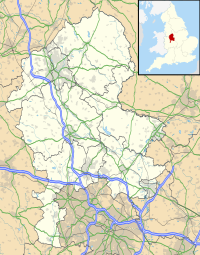| Loynton Moss | |
|---|---|
 Reed bed (formerly Blakemerly Pool) in Loynton Moss | |
| Location | near Woodseaves, Staffordshire |
| OS grid | SJ 788 246 |
| Coordinates | 52°49′08″N2°18′50″W / 52.819°N 2.314°W |
| Area | 13 hectares (32 acres) |
| Operated by | Staffordshire Wildlife Trust |
| Designation | Site of Special Scientific Interest |
| Website | www |
Loynton Moss is a nature reserve of the Staffordshire Wildlife Trust, near the village of Woodseaves, in Staffordshire, England. It is adjacent to the Shropshire Union Canal, as it runs from nearby Norbury to High Offley.

